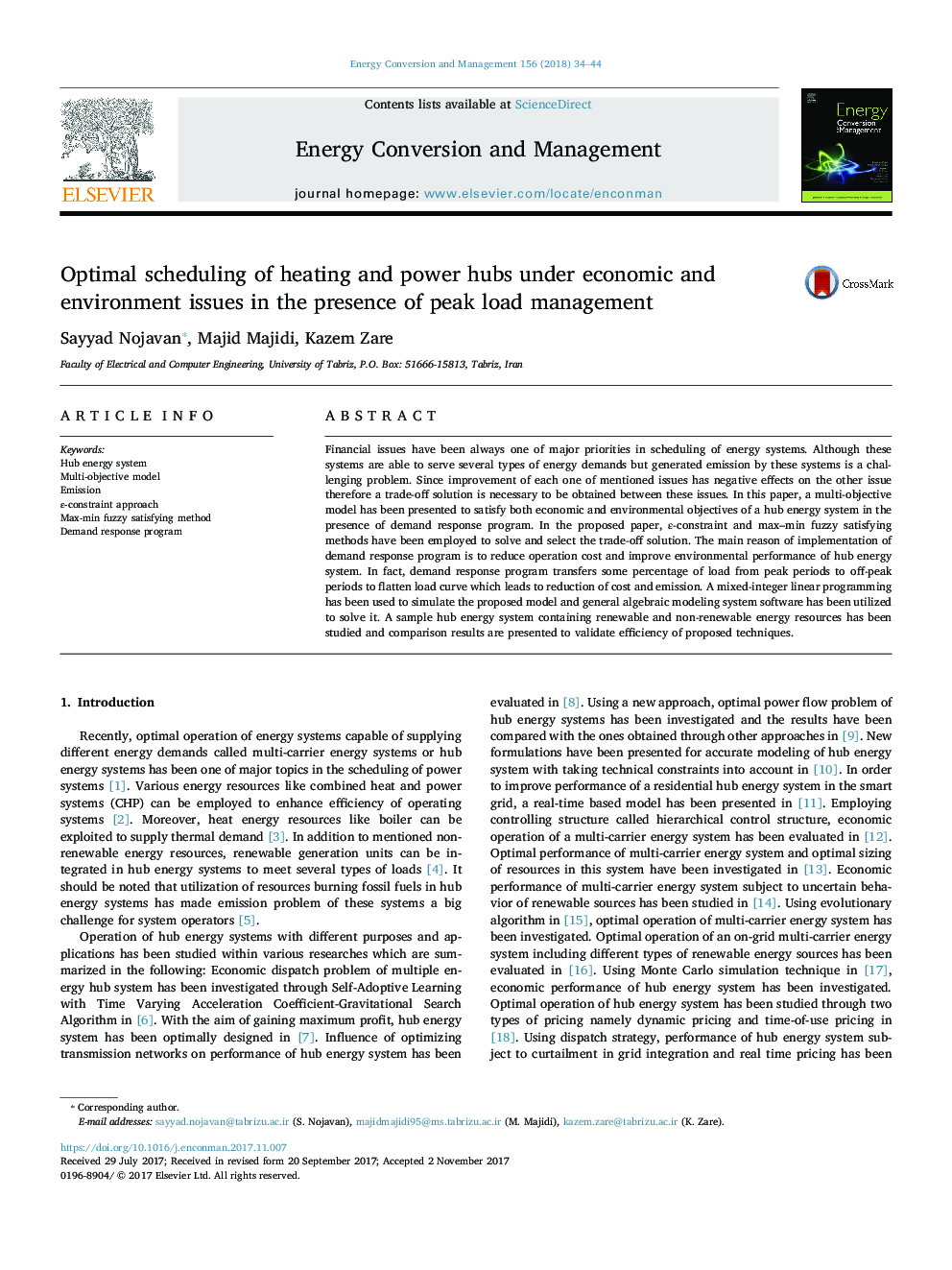| Article ID | Journal | Published Year | Pages | File Type |
|---|---|---|---|---|
| 7159420 | Energy Conversion and Management | 2018 | 11 Pages |
Abstract
Financial issues have been always one of major priorities in scheduling of energy systems. Although these systems are able to serve several types of energy demands but generated emission by these systems is a challenging problem. Since improvement of each one of mentioned issues has negative effects on the other issue therefore a trade-off solution is necessary to be obtained between these issues. In this paper, a multi-objective model has been presented to satisfy both economic and environmental objectives of a hub energy system in the presence of demand response program. In the proposed paper, ε-constraint and max-min fuzzy satisfying methods have been employed to solve and select the trade-off solution. The main reason of implementation of demand response program is to reduce operation cost and improve environmental performance of hub energy system. In fact, demand response program transfers some percentage of load from peak periods to off-peak periods to flatten load curve which leads to reduction of cost and emission. A mixed-integer linear programming has been used to simulate the proposed model and general algebraic modeling system software has been utilized to solve it. A sample hub energy system containing renewable and non-renewable energy resources has been studied and comparison results are presented to validate efficiency of proposed techniques.
Related Topics
Physical Sciences and Engineering
Energy
Energy (General)
Authors
Sayyad Nojavan, Majid Majidi, Kazem Zare,
